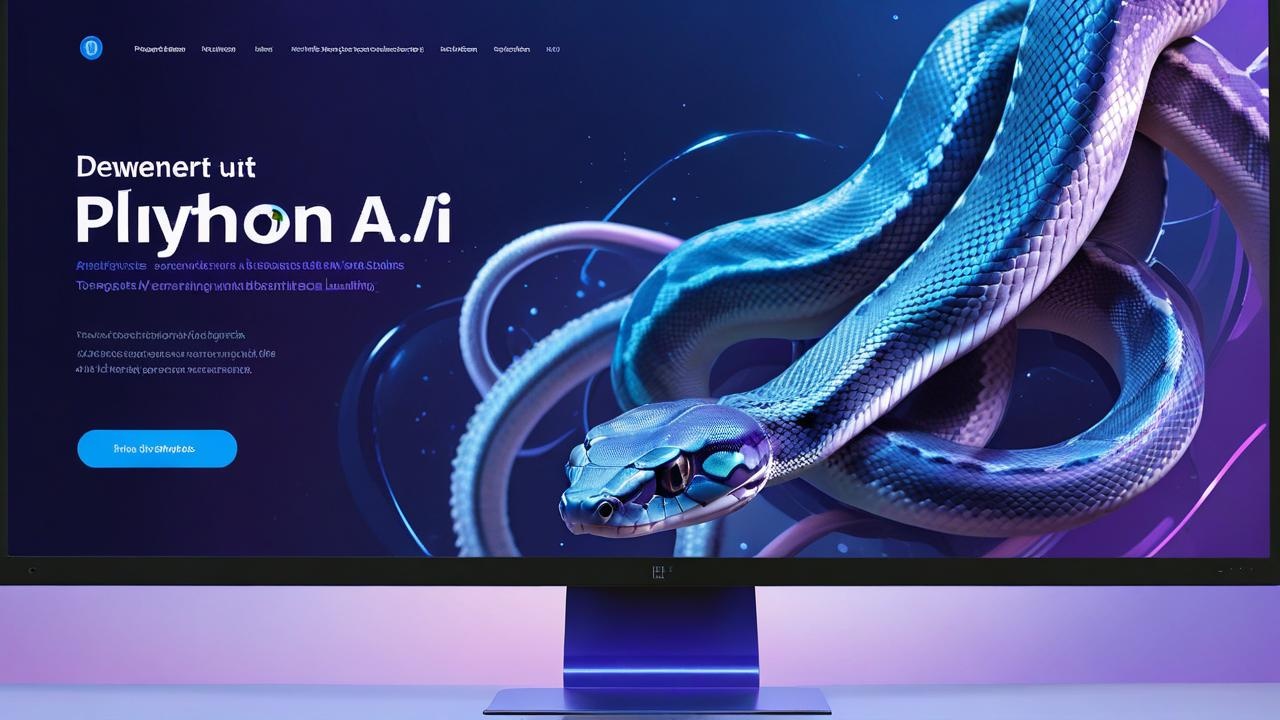Tag: All Tags Machine Learning (1)
AI Tools (1)
Tutorials (1)
Beginner Guides (1)
AI Ethics (1)
startups (1)
ai (1)
openai (1)
python (1)
workflow (1)
agent (1)
audio-separation (1)
pytorch (1)
source-separation (1)
SideProject (1)
speech-separation (1)
voicefilter (1)
good-first-issue (1)
hacktoberfest (1)
up-for-grabs (1)
async (1)
async-await (1)
asyncio (1)
game (1)
pygame (1)
automation (1)
ffmpeg (1)
short-video-automation (1)
short-video-maker (1)
short-videos (1)
tiktok-short-automation (1)
documentation-generator (1)
release-notes-generator (1)
MachineLearning (1)
testing (1)
ai-chatbot (1)
bge-large-en (1)
llama-index (1)
llm (1)
mistral (1)
mixtral-8x7b-instruct (1)
pgvector (1)
websocket (1)
artificial-intelligence (1)
backtrader (1)
keras (1)
particle-swarm-optimization (1)
python3 (1)
tkinter (1)
agi (1)
aigc (1)
alpaca (1)
awesome-list (1)
chatgpt (1)
deep-learning (1)
gpt (1)
gpt-4 (1)
llama (1)
llama2 (1)
llms (1)
stable-diffusion (1)
airport-designs (1)
airport-editing (1)
aviation (1)
flight-simulator (1)
infinite-flight (1)
github-api (1)
bert (1)
language-model (1)
nlp (1)
transformer (1)
pacman (1)
ai-for-agency (1)
ai-for-non-profit (1)
ai-platform (1)
claude (1)
claude-ai (1)
claude-api (1)
collaborativeai (1)
custom-ai-agents (1)
gemini-api (1)
gpt-4-1106-preview (1)
gpt4-api (1)
gpt4o (1)
multi-modal-ai (1)
openai-api (1)
openai-assistant (1)
openai-assistant-api (1)
selfhostedai (1)
agents (1)
crewai (1)
crewaigui (1)
crewaiui (1)
gui (1)
no-code (1)
streamlit (1)
douyin (1)
downloader (1)
generative-ai (1)
image (1)
kuaishou (1)
sound (1)
tiktok (1)
tools (1)
video (1)
video-editor (1)
genai (1)
langchain (1)
langgraph (1)
andrew-ng (1)
andrew-ng-course (1)
deeplearning-ai (1)
fine-tuning (1)
generative-ai-tools (1)
large-language-models (1)
pretraining (1)
rag (1)
responsible-ai (1)
game-development (1)
gamedev (1)
godot (1)
thirdperson (1)
cnn (1)
rnn (1)
tflearn (1)
deeplearning (1)
tensorflow (1)
tensorflow-tutorials (1)
course (1)
ai-agents-framework (1)
llm-agents (1)
llm-chain (1)
llm-framework (1)
llmops (1)
no-code-ai (1)
platform (1)
acquisition (1)
image-analysis (1)
image-processing (1)
imaging (1)
microscopy (1)
oad (1)
open-source (1)
python-script (1)
scripting (1)
zen (1)
zen-blue (1)
everyone (1)
greensock (1)
neural-network (1)
scrollmagic (1)
visualization (1)
clip-model (1)
dataset (1)
openai-clip (1)
paper (1)
screeps (1)
screeps-game (1)
strategy-game (1)
deployment (1)
kubeflow (1)
pipeline (1)
practical-machine-learning (1)
production-system (1)
scalable-applications (1)
system-design (1)
tfx (1)
opeani (1)
prompt-engineering (1)
data-mining (1)
data-science (1)
development (1)
research (1)
diffusion-models (1)
llava (1)
pytorch-lightning (1)
restoration (1)
sdxl (1)
super-resolution (1)
aiagent (1)
blockchain (1)
solana (1)
trading (1)
competition (1)
legends-of-code-and-magic (1)
locm (1)
strategy-card-game (1)
robocup (1)
robocup-ssl (1)
robotics-competition (1)
soccer (1)
university-project (1)
classification (1)
colab-notebook (1)
colaboratory (1)
convolutional-neural-networks (1)
google-cloud-platform (1)
keras-tensorflow (1)
mnist (1)
recurrent-neural-networks (1)
regression (1)
time-series (1)
business (1)
entrepreneur (1)
cuda (1)
gpu-acceleration (1)
gpu-computing (1)
gpus (1)
graalvm (1)
java (1)
levelzero (1)
multi-core (1)
opencl (1)
parallel-computing (1)
parallel-programming (1)
spirv (1)
aws (1)
data-analysis (1)
deep-learning-algorithms (1)
flask (1)
mlflow (1)
mlops (1)
mongodb (1)
pandas-python (1)
prefect (1)
search-engine (1)
sklearn-library (1)
sql (1)
statistics (1)
tutorial-code (1)
automation-tools (1)
business-automation (1)
enterprise-automation (1)
low-code (1)
n8n (1)
powerautomate (1)
self-hosted (1)
tray (1)
typescript (1)
workato (1)
workflow-automation (1)
zapier (1)
gpt4 (1)
groq-ai (1)
llama3 (1)
aws-lex (1)
aws-polly (1)
chatbot (1)
google-cloud (1)
ai-toolkit (1)
obsidian (1)
algorithmic-trading (1)
portfolio-management (1)
stock-price-prediction (1)
algorithms (1)
python-ai (1)
speech-recognition (1)
amqp (1)
aion (1)
aion-networks (1)
p2p (1)
http3 (1)
network (1)
quic (1)
tls (1)
data-channel (1)
ortc (1)
webrtc (1)
webrtc-libraries (1)
smtp-protocol (1)
smtplib (1)
airdrop (1)
airdrops (1)
nft (1)
nfts (1)
airflow (1)
tutorial (1)
airplay (1)
airplay-receiver (1)
airplay2 (1)
blog-theme (1)
gethugothemes (1)
hugo (1)
hugo-blog (1)
hugo-blog-theme (1)
hugo-cms (1)
hugo-multipurpose (1)
hugo-site (1)
hugo-theme (1)
hugo-themes (1)
jamstack (1)
jamstack-site (1)
mit-license (1)
portfolio-website (1)
static-site-generator (1)
jekyll (1)
jekyll-business-theme (1)
jekyll-templates (1)
jekyll-theme (1)
themefisher (1)
airtable (1)
expressjs (1)
nodejs (1)
agent-framework-javascript (1)
ai-agents (1)
deepseek (1)
deepseek-r1 (1)
desktop-app (1)
llm-application (1)
llm-webui (1)
lmstudio (1)
local-llm (1)
localai (1)
multimodal (1)
ollama (1)
vector-database (1)
webui (1)
analysis (1)
awesome (1)
cryptocurrency (1)
financial (1)
quant (1)
quantitative-finance (1)
reinforcement-learning (1)
stock-market (1)
technology-analysis (1)
bot (1)
conversational-ai (1)
opensource (1)
ant-colony-optimization (1)
artificial-neural-networks (1)
fcm (1)
hmm-model (1)
kmeans (1)
knn-classification (1)
machine-learning-algorithms (1)
qml (1)
quantum (1)
quantum-ai (1)
quantum-computing (1)
quantum-programming-language (1)
qubits (1)
auto-play-game (1)
automatic (1)
genius-invokation-tcg (1)
genshin (1)
genshin-impact (1)
bootcamp (1)
learning (1)
machine-learning-practice (1)
network-automation (1)
networkautomation (1)
networks (1)
contract (1)
decentralized (1)
golang (1)
architecture (1)
git (1)
refactor (1)
refactoring (1)
anthropic (1)
anthropic-claude (1)
ggml (1)
llamacpp (1)
web3 (1)
abtesting (1)
automl (1)
aws-sagemaker (1)
bias-detection (1)
data-labeling (1)
matplotlib (1)
model-deployment (1)
pandas (1)
statistical-data (1)
cs50 (1)
cs50ai (1)
cs50problemsets (1)
harvard-university (1)
aichatbot (1)
chatbots (1)
qdrant (1)
semantic-search (1)
data-centric-ai (1)
homework (1)
lab (1)
cpp (1)
deep-reinforcement-learning (1)
smallbusiness (1)
neural-networks (1)
per-arne (1)
tree-search (1)
beta (1)
carpentries-incubator (1)
english (1)
glam (1)
lesson (1)
eigenvalues (1)
free-software (1)
genetic-algorithm (1)
hedgefund (1)
investment-portfolio (1)
portfolio-optimization (1)
trading-algorithms (1)
trading-strategies (1)
tradytics (1)
ai-learning (1)
evolution-strategies (1)
evolutionary-algorithms (1)
evolution-strategy (1)
flappy-bird (1)
unsupervised-learning (1)
ai-tutorial (1)
business-analytics (1)
python-tutorial (1)
python-tutorials (1)
blender (1)
canvas (1)
freeciv (1)
html5 (1)
javascript (1)
webgl (1)
bedrock (1)
claude3 (1)
command-r (1)
image-generation (1)
lambda (1)
nova (1)
react (1)
sagemaker (1)
finetuning (1)
generative (1)
llm-training (1)
api (1)
cli (1)
developer-tools (1)
etl (1)
unstructured-data (1)
trading-bot (1)
boilerplate (1)
codex (1)
generator (1)
scaffold (1)
template (1)
whisper (1)
yeoman (1)
ai-agent (1)
blackjack (1)
csharp (1)
wpf (1)
automation-framework (1)
nextjs (1)
prisma (1)
shadcn-ui (1)
supabase (1)
tailwindcss (1)
vercel (1)
vercel-ai-sdk (1)
gpt-4o (1)
terminal (1)
msl-data-ai (1)
apis (1)
automated (1)
data-flow (1)
docker (1)
integration-framework (1)
integrations (1)
ipaas (1)
low-code-platform (1)
node (1)
crb (1)
framework (1)
futures (1)
messaging (1)
rust (1)
tokio (1)
ui (1)
anonymization (1)
business-process-automation (1)
customer-engagement (1)
customer-support (1)
issue-tracking-system (1)
lowcode (1)
natural-language-processing (1)
process-automation (1)
sentiment-analysis (1)
social-listening (1)
social-network-analysis (1)
text-analysis (1)
text-analytics (1)
text-classification (1)
mmo (1)
mmorpg (1)
perl (1)
ragnarok (1)
agentic-ai (1)
autogen (1)
multi-agent (1)
multi-agent-systems (1)
swarm (1)
google-colab-notebook (1)
jupyter-notebook (1)
azure (1)
azure-cli (1)
book (1)
chalice (1)
gcp (1)
ipython (1)
ml (1)
plotly (1)
r (1)
seaborn (1)
serverless (1)
step-functions (1)
cybersecurity (1)
prompt-injection (1)
security (1)
social (1)
social-media (1)
webapp (1)
documentai (1)
ocr (1)
opencv (1)
robocorp (1)
robot (1)
robotframework (1)
rpa (1)
rpa-robots (1)
sdfx (1)
python2 (1)
strategy (1)
sqlalchemy (1)
buisness (1)
enterpreneur (1)
market-research (1)
nextjs14 (1)
saas (1)
ai-in (1)
data-apps (1)
data-visualization (1)
interface (1)
interface-builder (1)
models (1)
ui-components (1)
websockets (1)
bi (1)
data (1)
dw (1)
erp (1)
xpert (1)
hand-recognition (1)
hand-tracking (1)
web (1)
google-text-to-speech (1)
youtube (1)
youtube-shorts (1)
Agentic Systems (1)
AI infrastructure design (1)
AI operations (1)
Cloud computing (1)
DevOps (1)
Python programming (1)
AI and machine learning fundamentals (1)
Data analysis and visualization (1)
Robotic Process Automation (RPA) (1)
Automation 360 (1)
Excel Automation (1)
Ansible (1)
Scalability (1)
AI app development (1)
DALL-E (1)
AI strategy (1)
AI governance (1)
GenAI capability (1)
Organizational growth (1)
Ethical compliance (1)
Chatbot development (1)
AI development (1)
IBM Watson Assistant (1)
No-code app development (1)
AppSheet (1)
Content creation (1)
Marketing strategy (1)
Entrepreneurship (1)
Leadership and Management (1)
Marketing (1)
Sales (1)
Strategy and Operations (1)
Finance (1)
Nutrition (1)
Health (1)
Business Strategy (1)
Innovation (1)
Privacy (1)
Risk Mitigation (1)
AI skills (1)
Productivity (1)
Prompting (1)
Responsible Use (1)
Google Cloud AI Platform (1)
Google Cloud Storage (1)
Google Cloud Datastore (1)
Speech-to-Text (1)
Biometric Solutions (1)
Computer Vision (1)
Data interpretation (1)
Healthcare Analytics (1)
Microsoft Copilot (1)
AI-powered tools (1)
Vertex AI (1)
Critical thinking (1)
Problem-solving (1)
Custom GPTs (1)
Language understanding (1)
Python coding (1)
AI coding (1)
NumPy (1)
Creativity (1)
UI Automation (1)
Selectors (1)
Recording feature (1)
Business implementation (1)
CustomGPT (1)
Video Conferencing (1)
Nvidia (1)
AI power play (1)
Business opportunities (1)
Entrepreneurs (1)
Small and Medium Businesses (1)
Digital Workspace (1)
Customer Relationship Tech (1)
small businesses (1)
Integration (1)
Automated Machine Learning (1)
AI Applications (1)
Access Restrictions (1)
Supervised Learning (1)
Business Ventures (1)
small business (1)
growth (1)
Low-code development (1)
No-code development (1)
Application development (1)
Free AI Tools (1)
Azure AI (1)
AI fundamentals (1)
AI for small business (1)
Artificial Intelligence (AI) (1)
Generative AI (GenAI) (1)
AI Model Building (1)
AI Deployment (1)
Practical AI (1)
Course Bot (1)
Disciplined Entrepreneurship (1)
AI applications in business (1)
Big Data (1)
AI Trends (1)
AI Developments (1)
ChatGPT for Work (1)
March updates (1)
AI adoption (1)
AI in Retail (1)
Video Security (1)
Loss Prevention (1)
AI Foundations (1)
Use Cases (1)
AI and Machine Learning (1)
Future of Work (1)
Efficiency (1)
wealth creation (1)
AI-Powered Applications (1)
Healthcare Data Analysis (1)
Scikit-learn (1)
App development (1)
AI website builder (1)
AI Assist (1)
AI for small businesses (1)
automating routine tasks (1)
generating and improving content (1)
AI for Business (1)
AI basics (1)
AI impact (1)
AI implementation (1)
Business Productivity (1)
HubSpot (1)
Low-Code AI (1)
Low-code AI platforms (1)
No-code AI platforms (1)
AI Risk Management (1)
Business Transformation (1)
Digital Transformation (1)
Professional Development (1)
Business impact (1)
AI tools for small business (1)
AI tools for UX (1)
Streamlining UX work (1)
Brainstorming with AI (1)
video generation (1)
voice cloning (1)
AI benefits (1)
AI risks (1)
Introduction to AI (1)
Types of AI (1)
streamline operations (1)
Business intelligence (1)
AI-Powered Analytics tools (1)
AI chatbots (1)
AI apps for content creation (1)
AI in Business (1)
Accounting (1)
Meeting Minutes (1)
Shorts (1)
Vector search (1)
LanceDB (1)
Augmented Intelligence (1)
Google's AI Course (1)
Material Design (1)
Icons (1)
Web Design (1)
Education (1)
learnmachinelearning (1)
Sort by: Newest First Random

 40
40  59
59 
 40
40  59
59 
 44
44  57
57 
 24
24  68
68 
 52
52  52
52 
 53
53  53
53 
 50
50  62
62 
 70
70  67
67 
 57
57  58
58 
 56
56  59
59 

